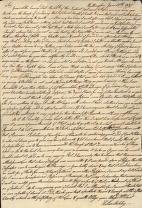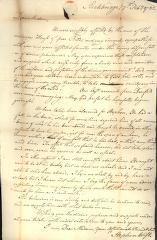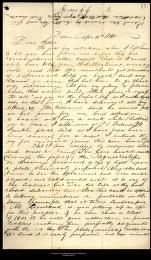|

Letter to Nathaniel Dwight from Dr. Elihu Ashley

Letter to Esther Williams

Letter to Rebecca Jackson Williams from her son

Letter to Agnes Higginson from George Fuller

Letter to Aaron Fuller from George Fuller
|
Summary and Objective
Abraham Maslow, a humanist, believed that everyone strives to achieve perfection. For a person to become the "best they could be," certain needs had to be filled in their life. Basic needs like food, water, and shelter come first, followed by safety and security, then love, and next self esteem. Finally, a person could become "self actualized" - reaching the highest level of self awareness and goodness.
Various personal papers from the American Centuries collection will be used to review Maslow's Hierarchy of Needs. After recieving some background information on each writer, students will read the letters to determine where the writers' personality would "fit" in the Hierarchy.
Teaching Plan
Step 1.
In small groups, students will reconstruct Maslow's Hierarchy of Needs using their text and notes from Psych I.
Step 2.
Students will read the letters, highlighting phrases and information that would indicate personality characteristics on the Hierarchy.
Step 3.
After small groups have completed their task, the large group will reconvene and discuss their groups' decision, members must justify their choices using phrases and information from each letter.
|




